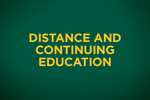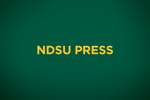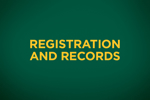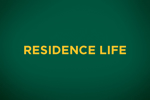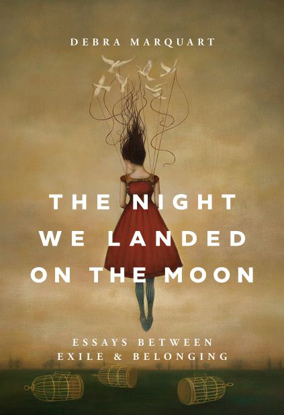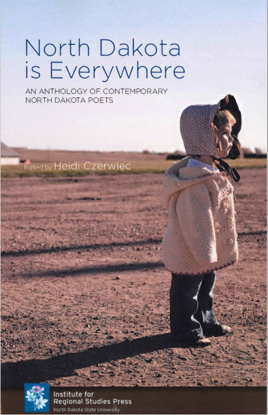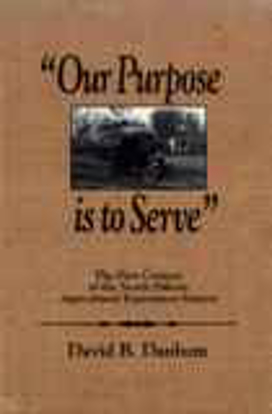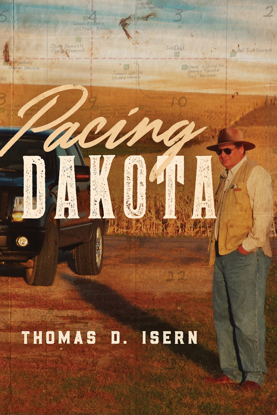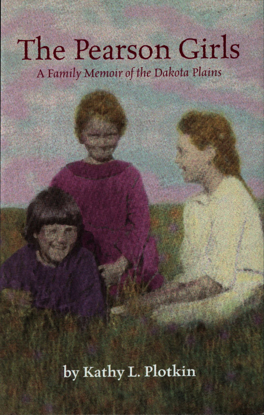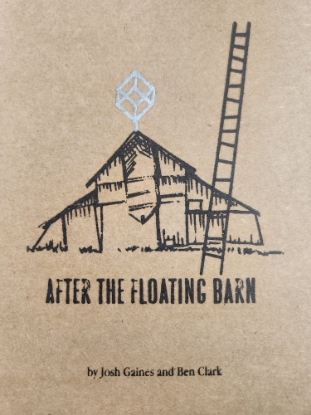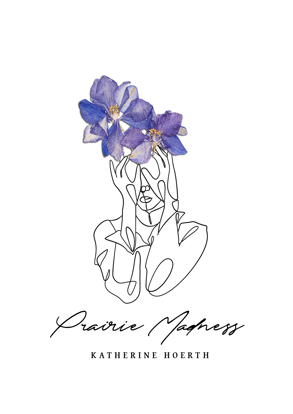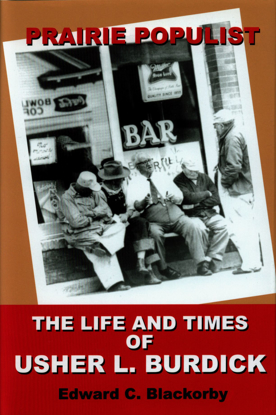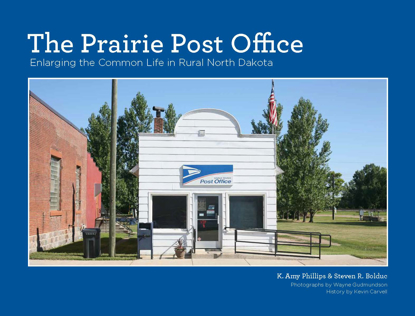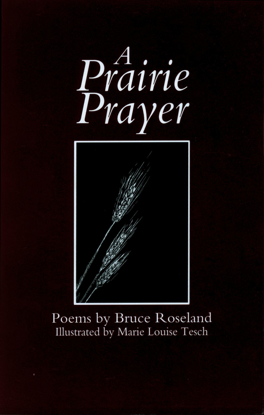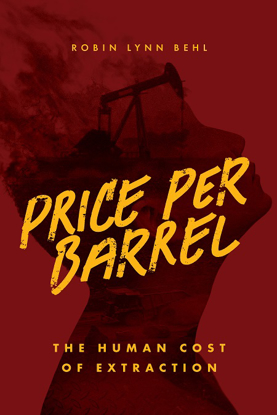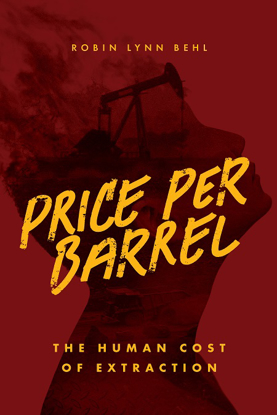All Books
Night We Landed on the Moon: Essays between Exile & Belonging
Fans of Debra Marquart’s landmark memoir, The Horizontal World, will rejoice over the publication of The Night We Landed on the Moon—shapeshifting essays that travel from the blizzardy Midwest to sweltering Siberia, from a flooding Michigan basement to the panic-inducing Paris Catacombs, from her life as a rebellious farmer’s daughter to hard rock musician to professor and poet laureate. Every page is full of story and insight, laced with wit, as Marquart meditates on the hungers of home and wanderlust, the way her Germans-from-Russia family is "preserved in their hyphenations," the poetic strangeness of basketball, the insidiousness of fracking boomtowns, and the ironies of a nostalgia called heimat. The individual essays are astonishing, the collection as a whole profound.” —K. L. Cook, author of Marrying Kind and The Art of Disobedience
North Dakota is Everywhere
The scope of the poets in this collection is as broad as the landscape itself, including work by Heid E. Erdrich, Mark Vinz, Debra Marquart, Ed Bok Lee, and North Dakota’s Poet Laureate,Larry Woiwode.
Some are poets descended from indigenous inhabitants of the High Plains. Others are descendants of those who immigrated here,from Germany, Russia, or the Scandinavian countries in the nineteenth century, or more recently from other parts of the country and world. They write about the historical struggles of settlement and assimilation, and more contemporary versions of those struggles in the Bakken oil patch in the western part of the state. Some write about North Dakota from the rural settings they have known and loved for a lifetime, others from the distant vantages of nostalgia or escape, and still others from the point of view of transplants coming to terms with their new home. The poets here include seasoned and emerging voices, women and men, old and young, those from the ranching and oil-flared badlands west of the Missouri, and from the flood-prone river valley farmlands of the east.
The poems in this book ache for home. They ache to be at home. In reflecting those who ache in this great expanse, these poems are about what connects us together as humans, poems that sing to each other across lines and pages and space, demonstrating that, as poet Thomas McGrath asserts in his Letter to an Imaginary Friend,North Dakota is everywhere.
Edited by Heidi Czerwiec
Copyright 2015
180 pages
Softcover
North Dakota: Prairie Landscape
Featuring stunning black-and-white landscapes taken between 1998 and 2002, North Dakota: Prairie Landscape is a testament to photographer Leo Kim's deep appreciation for the nature and people of North Dakota.
Leo Kim grew up in Shanghai, Macao, and Hong Kong and later lived in Austria and Minneapolis. His photographs are featured in numerous private and public collections including Microsoft Business Solutions and the North Dakota Museum of Art.
Operation Snowbound: Life behind the Blizzards of 1949
“Readers of Operation Snowbound will find themselves immersed in blinding snow, innovative rescues, and daring aerial operations during the blizzards of 1949. Mills gives readers a 1st-hand look at how cooperation from pilots, farmers, and scientists in the Great Plains & the American West were instrumental in formalizing the federal emergency response system that continues to help Americans face environmental hazards today.”--David D. Vail, U. of Neb. at Kearney.
Our Purpose is to Serve
David Danbom's Our Purpose is to Serve is a probing, insightful and lively history of the first hundred years of the North Dakota Agricultural Experiment Station.
Pacing Dakota
Pacing Dakota is a collection of essays reflecting on the history and culture of the Great Plains of North America. University Distinguished Professor Thomas D. Isern, with more than forty years as a working historian and regional author, transitions from the close confines of historical archives into the prairie landscapes of the northern plains. Pacing Dakota speaks with the mingled voices of scholarly historian, outdoor sportsman, culinary enthusiast, lifelong Lutheran, and prairie farmboy. The author prowls prairie churches, finds forgotten artifacts, and gathers cherished stories from Williston to Wahpeton and points beyond. He situates his encounters along the way into the canon of literary and historical writing on the prairies. In the end, he speaks for a generation committed to making a good life in this place. 264 pp. 17 photos. Hardcover.
Palaces on the Prairie
From the 1880s to the 1930s, at least 34 "prairie palaces" of one sort or another sprang up in at least 24 towns across the Midwest. Their themes ranged in scope from grasses to grains to minerals, but all sought the same goal - attention! Evans' book attempts to tackle many unanswered questions surrounding the successes and failures of each palace and community.
By: Rod Evans
Pearson Girls, The
The real-life story of five spunky, beautiful sisters born to the rigors of homesteading on the North Dakota prairie.
By: Kathy L. Plotkin
After the Floating Barn
Winner of the 2025 Poetry of the Plains & Prairies (POPP) Award
Volume 10 of the POPP Award Series
This collection of poems is a narrative, a folk tale, a ghost story, and a loose, speculative history of a strange few acres of land in Nebraska called Art Farm. We wrote it during a two-month-long artists’ residency in 2017.
This book began as a sort of reply to an unpublished chapbook by Ben Clark and GennaRose Nethercott called, Dear Fox, Dear Barn. In that book, The Barn is a character. We began to dissect how the land of Art Farm Nebraska and its inhabitants interacted around that character. On the farm there are multiple structures in a constant state of renewal and decay. Throughout the summer and fall people live and work there, rebuilding and creating. In the winter the weather takes over. The raccoons take over. The ghosts come back. The story goes, sometime in the early 2000s, what would become The Floating Barn was being moved from another farm on huge steel I-beams. When they reached Art Farm, the barn started to shift. Instead of risking further damage they stopped moving and built a trailer-high post foundation beneath the I-beams and reinforced the damaged areas. The building seemed to float there above the prairie, dropping shingles and wall sections until it finally collapsed in a 2018 winter storm. One other structure mentioned directly in our book is a farmhouse built around 1910. Ben and I lived in that house with the mice and mosquitos and attic raccoons for two months. It was amazing.
Forgotten Frequencies
THE FIRST FORTY CUSTOMERS TO ORDER THIS TITLE FROM OUR ONLINE STORE WILL RECEIVE AN AUTOGRAPHED, LETTERPRESS PRINTED CARD FEATURING THE POEM "DECEMBER" FROM THIS COLLECTION.
Winner of the 2023 Poetry of the Plains & Prairies (POPP) Award
Volume 8 of the POPP Award Series
From the author:
I began writing Forgotten Frequencies while working as a country radio broadcaster in my hometown of Montevideo, Minnesota. During this time, I began to conceive of the poetic imagination as a kind of underground radio station of the soul, hosted by the muses. When I am lucky enough to catch the signal, I hear hymns and folk songs and sonnets, sounds of ancient glacial rivers, messages from fields, and voices from this region’s past. This book is a record of my attempts to transcribe this staticky inner music.
Brendan Stermer is a poet from Montevideo, Minnesota. His work is influenced by the rich literary and artistic tradition of the Upper Midwest. He is also the host and producer of Interesting People Reading Poetry, a podcast where artists and luminaries read a favorite poem and share what it means t them. He currently lives in East Grand Forks, Minnesota, and works as a writer exploring rural health issues across the country.
ISBN: 978-1-946163-62-2
Page count: 40
Picture Count: 2
Paperback, stitched
Publication Date: December 12, 2023
Prairie Madness
About a year ago, Katherine Hoerth moved to Nebraska from Texas; her poems chronicle the experience of adjusting to life on the Great Plains amid the isolation and uncertainty of the COVID-19 pandemic. The term "prairie madness" feels, Hoerth observes, particularly fitting as it was once used to describe the "madness" of women pioneers of Nebraska and Kansas who endured extreme isolation.
Hoerth is an assistant professor of English at Lamar University and editor of Lamar University Literary Press. Her work has been published in journals such as The Georgia Review and Valparaiso Review. She is a member of the Texas Institute of Letters, and in 2015 she won the Helen C. Smith Prize for the best book of poetry in Texas.
Prairie Madness is the sixth volume of our Poetry of the Plains & Prairies letterpress chapbook series. Each copy is unique, with hand-assembled pressed flowers.
Prairie Mosaic: An Ethnic Atlas of Rural North Dakota, 2nd Edition
Finalist in 2018 Midwest Book Awards Social Science/Political/Culture
Prairie Populist: The Life & Times of Usher L. Burdick
Usher L. Burdick was a powerful and colorful character in North Dakota's political history. Blackorby has written a fascinating and valuable analysis of the forces at work in Usher Burdick's public and private history.
By: E.C. Blackorby.
Prairie Post Office: Enlarging the Common Life in Rural North Dakota
SAVE OUR POST OFFICE! This was the plea when the USPS determined to restructure or close post offices across the US, including 76 locations in North Dakota. In response, authors Amy Phillips and Steven Bolduc set out to explore the contemporary role of post offices in ND. The Prairie Post Office documents an essential institution and includes a history of northern Dakota Territory & ND rural postal services by Kevin Carvell and 100+ color photos by Wayne Gudmundson.
2018 Bronze Medalist in IPPY Awards for Midwest--Best Regional Nonfiction; 2018 Midwest Book Awards finalist for Social Science/Political/Culture; 2018 Midwest Book Awards finalist for Total Book Design, by Deb Tanner; 2018 North Dakota Documents Award, 1st Place
Paperback
Prairie Prayer, A
A collection of poems that continue the ideas first introduced by South Dakotan Bruce Roseland in The Last Buffalo. Bruce's poems are about surviving the (simple) country life in South Dakota.
By: Bruce Roseland.
Illustrated by: Marie Louise Tesch
ISBN 978-0-911042-70-2
Copyright 2008
Softcover 84 pages
Price Per Barrel: The Human Cost of Extraction (hardcover)
First responders, once called to duty, refuse to abandon their posts, even when their towns change around them. They rise far and above their job descriptions, putting aside their own PTSD until the boom is over. But the trauma they endure at the hands of newcomers and outsiders is real, persistent, and contagious. Emergency response is the kind of work that will change a person, the kind of work that leaves an indelible mark. Each person in that profession finds some way to cope with the horrors of mankind. Or, they don’t survive.
Robin Lynn Behl's means of coping was to drive. For years, she drove long distances across the country, across the continent, until she had seen all fifty states and every province in Canada. Her years on the road included six months living in her truck and talking to the people on the front lines. Along the way, she ran into friends--her brothers and sisters—in the badge. She found the other people who were still doing the work she had done, and they started to tell her their stories. By telling their story, she can tell hers, and maybe be rid of the burdens.
Price Per Barrel: The Human Cost of Extraction (limited edition paperback)
First responders, once called to duty, refuse to abandon their posts, even when their towns change around them. They rise far and above their job descriptions, putting aside their own PTSD until the boom is over. But the trauma they endure at the hands of newcomers and outsiders is real, persistent, and contagious. Emergency response is the kind of work that will change a person, the kind of work that leaves an indelible mark. Each person in that profession finds some way to cope with the horrors of mankind. Or, they don’t survive.
Robin Lynn Behl's means of coping was to drive. For years, she drove long distances across the country, across the continent, until she had seen all fifty states and every province in Canada. Her years on the road included six months living in her truck and talking to the people on the front lines. Along the way, she ran into friends--her brothers and sisters—in the badge. She found the other people who were still doing the work she had done, and they started to tell her their stories. By telling their story, she can tell hers, and maybe be rid of the burdens.
Promise of Water
The Garrison Diversion Project has been a controversial political issue in North Dakota for decades. More than half a billion dollars already have been spent, and a comparable amount is being sought to bring the project to completion. The landscape has been transformed by pumping stations and other large-scale waterworks, along with more than one hundred twenty miles of canals.
By: Wayne Gudmundson and Robert Silberman.
Science and Policy: Interbasin Water Transfer of Aquatic Biota
This book offers a history of the Garrison Diversion Conservancy District and the role of science, in what was largely a politically based problem.
By: Jay Leitch.
Sister Secrets: A Brother's Reveal
Sister Secrets: A Brother’s Reveal is a study in regret and hope for dealing with family members who suffer from mental illness, in this case, sisters who are too-late diagnosed with bipolar disorder. One sister is dead. The other is in prison. Sister Secrets is written by the brother, who examines family dynamics—a farm family in the Red River Valley, an often-absent father involved in politics, and sexual abuse—where people often don’t talk publicly (or privately) about mental illness.










